Omani architecture is a blend of traditional and modern styles that have evolved over centuries. The country’s rich cultural heritage is reflected in its architecture, which is a testament to the ingenuity, craftsmanship, and artistic sensibility of its people. Omani architecture is characterized by a unique blend of Islamic, Persian, Indian, and African influences, resulting in a style that is both distinctive and elegant.
The history of Omani architecture can be traced back to the pre-Islamic period, when the country was known for its flourishing trade and commerce. The arrival of Islam in the 7th century brought with it a new architectural style that was heavily influenced by the Islamic tradition. Over the centuries, Omani architecture has undergone several transformations, with each era leaving its mark on the built environment. Today, Omani architecture is a vibrant and dynamic field that continues to evolve, reflecting the country’s changing needs and aspirations.
Overview of Architectural Styles
Oman’s architectural history is characterized by a blend of traditional and modernist designs. The country’s unique location and history have influenced its architecture, which reflects the diverse cultural influences that have shaped the country over the centuries.
Traditional Architecture
Oman’s traditional architecture is heavily influenced by Islamic and Arab styles. The country’s hot and arid climate has also played a significant role in shaping its architecture, with buildings designed to provide shade and ventilation.
Traditional Omani buildings are typically constructed from local materials such as stone, mud, and palm fronds. They are often decorated with intricate patterns and designs, including geometric shapes and calligraphy.
One of the most notable examples of traditional Omani architecture is the Al Alam Palace in Muscat, which features a distinctive Islamic design with ornate arches and domes. Another notable example is the Bahla Fort, a UNESCO World Heritage Site that dates back to the 13th century and is one of the oldest and largest forts in Oman.
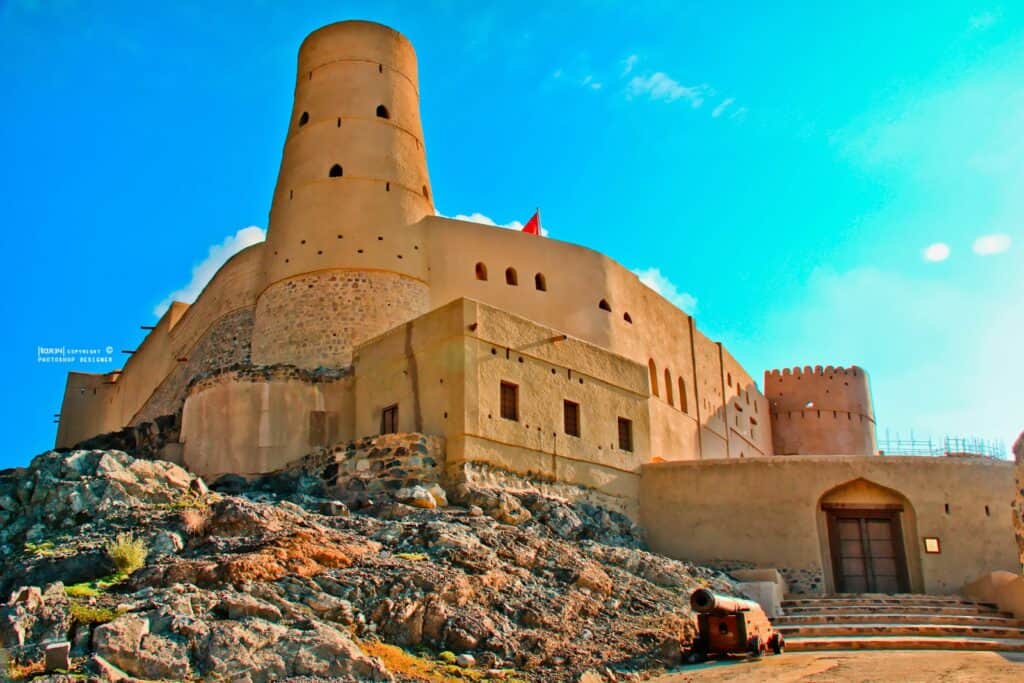
Modernist Designs
In recent years, Oman has seen a rise in modernist architecture, particularly in its cities. Modernist buildings often incorporate elements of traditional Omani architecture, such as the use of local materials and intricate designs.
One example of modernist architecture in Oman is the Royal Opera House Muscat, which opened in 2011. The building features a contemporary design with a nod to traditional Omani architecture, including a facade of white marble and a central dome inspired by the traditional Omani incense burner.
Another example is the Oman Convention and Exhibition Centre, which opened in 2016. The building features a modern design with a facade of local stone and a roof inspired by the shape of traditional Omani fishing boats.
Overall, Oman’s architecture reflects its rich cultural heritage and its embrace of modernity. Its unique blend of traditional and modernist styles has created a distinctive architectural landscape that is both functional and aesthetically pleasing.
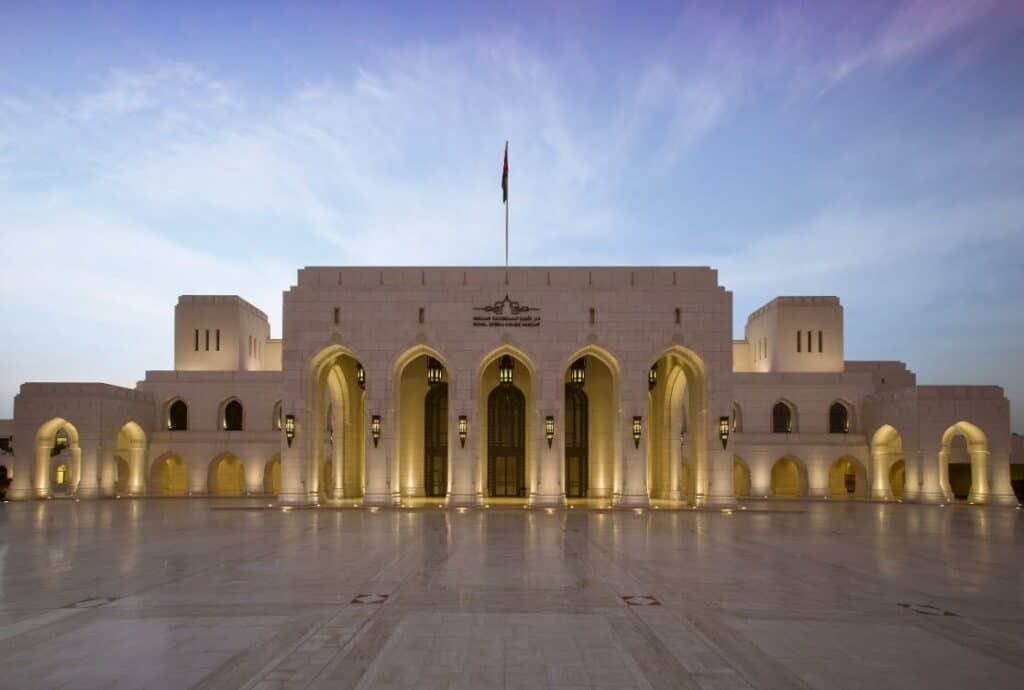
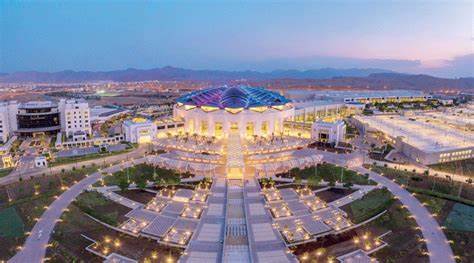
Impact of Climate and Geography
Omani architecture has been shaped by the country’s unique climate and geography. The rugged terrain, harsh desert climate, and proximity to the sea have all influenced the design of buildings in Oman.
Use of Mud Brick
Mud brick has been a popular building material in Oman for centuries due to its abundance and low cost. It is particularly well-suited to the hot, dry climate, as it provides excellent insulation against the heat. Mud brick can also be easily molded into various shapes, making it a versatile material for building.
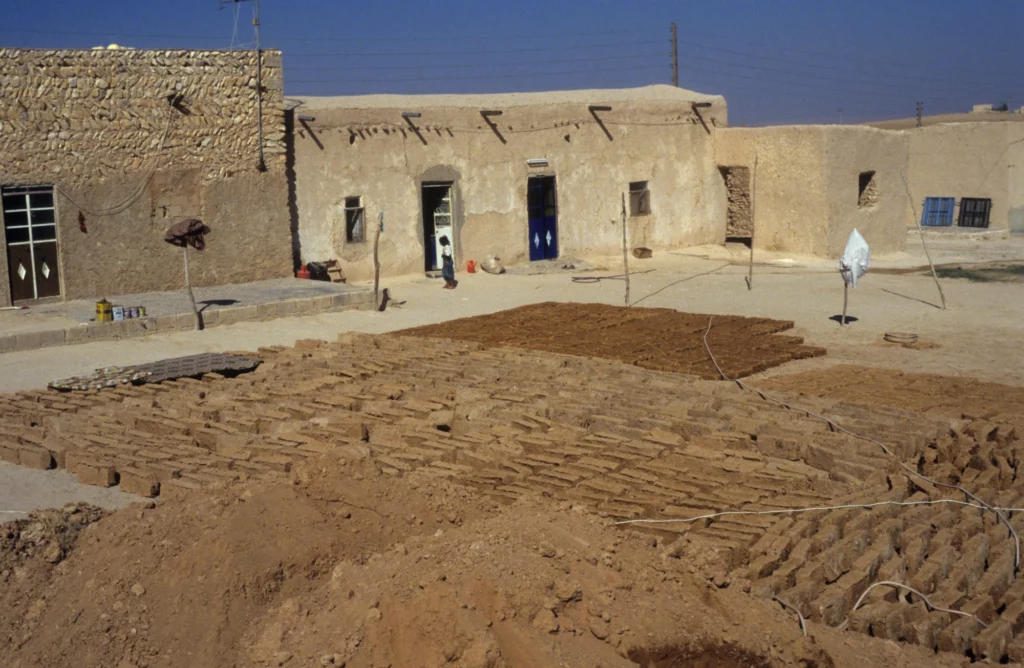
Limestone as a Building Material
Limestone is another common building material in Oman. It is a durable and long-lasting material that can withstand the harsh climate and rugged terrain of the country. Limestone is also readily available in Oman, making it a popular choice for construction.
Design Features
Omani architecture incorporates a number of design features that are well-suited to the country’s climate and geography. For example, many buildings have thick walls to provide insulation against the heat, while also being able to withstand the strong winds that are common in the region. Buildings are also often designed to maximize natural light and ventilation, with large windows and open courtyards.
Conclusion
Overall, the impact of climate and geography on Omani architecture has resulted in a style that is both functional and aesthetically pleasing. The use of local materials and design features that are well-suited to the climate and terrain have created a unique architectural tradition that is deeply rooted in Omani culture.
Key Architectural Landmarks
Omani architecture is a blend of traditional Islamic and regional styles, with a focus on sustainability and functionality. The country is home to several key architectural landmarks that showcase the rich history and cultural heritage of the region. Here are a few notable examples:
Sultan Qaboos Grand Mosque
The Sultan Qaboos Grand Mosque is one of the most iconic landmarks in Oman, located in the capital city of Muscat. It was built in 2001 and can accommodate up to 20,000 worshippers at a time. The mosque features a blend of Islamic, Middle Eastern, and Omani architectural elements, with a grand dome, minarets, and intricate tile work. The interior of the mosque is equally impressive, with a massive chandelier, ornate carpets, and beautiful calligraphy.
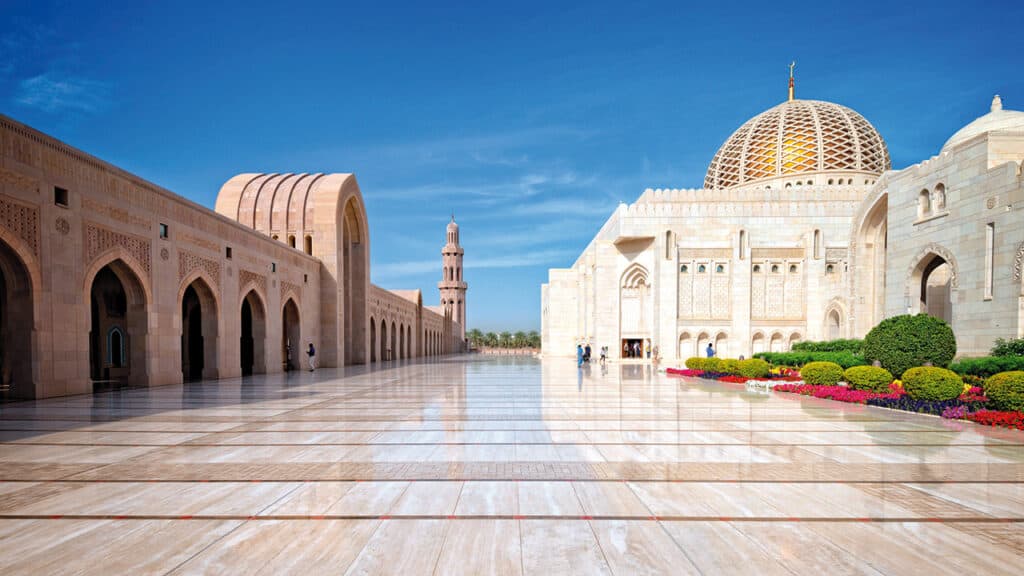
Bahla Fort
Bahla Fort is a UNESCO World Heritage Site located in the town of Bahla, about 200 km from Muscat. It was built in the 13th century and is one of the oldest and largest forts in Oman. The fort is made of adobe and mud brick and features several towers, walls, and gates. It was once a center of pottery and metalwork, and today visitors can explore the fort’s many rooms and courtyards to learn about the history of the region.
Other notable architectural landmarks in Oman include the Royal Opera House Muscat, the Al Alam Palace, and the Nizwa Fort. Each of these buildings showcases the unique blend of traditional and modern elements that make Omani architecture so distinctive.

Role of Architecture in Shaping Identity and Culture
Role of Architecture in Shaping Identity and Culture
Omani architecture is deeply rooted in Islamic culture and tradition. The Islamic influence is evident in the use of geometric patterns, calligraphy, and the use of natural materials such as stone, wood, and clay. The traditional Omani architecture is characterized by the use of wind towers, which are an essential part of the country’s architectural heritage. The wind towers are used to regulate the temperature inside the buildings, making them cool and comfortable even in the scorching heat of the desert.
The architecture of Oman is not only functional but also aesthetically pleasing. The buildings are designed to blend in with the natural surroundings, and the use of earthy colors and materials adds to the beauty of the structures. The traditional Omani architecture is also known for its intricate designs and patterns, which are often found on the walls, ceilings, and doors of the buildings.
Omani architecture has played a significant role in shaping the identity and culture of the country. It reflects the country’s rich history, cultural heritage, and traditional values. The architecture of Oman has inspired artists and writers for centuries, and it continues to be a source of inspiration for many today. The buildings and structures of Oman are not just physical structures, but they are also a representation of the country’s identity and culture.
In conclusion, the role of architecture in shaping the identity and culture of Oman cannot be overstated. It reflects the country’s rich history, cultural heritage, and traditional values. The traditional Omani architecture is a blend of Islamic culture and tradition with modern styles, making it unique and distinctive. The architecture of Oman has inspired artists and writers for centuries, and it continues to be a source of inspiration for many today.
Challenges and Opportunities Facing Architects and Builders
The architectural landscape of Oman is undergoing significant changes due to modernization and globalization. While this presents exciting opportunities for architects and builders, it also poses several challenges.
One of the primary challenges facing architects and builders is the need to balance tradition with innovation. Oman has a rich architectural heritage, and many buildings are constructed using traditional materials and techniques. However, as the country modernizes, there is a growing demand for contemporary buildings that incorporate new materials and technologies. Architects and builders must find ways to incorporate modern elements while still respecting Oman’s architectural traditions.
Another challenge is the need to address environmental concerns. Oman’s climate is harsh, with high temperatures and limited rainfall. Architects and builders must design buildings that can withstand these conditions while also being energy-efficient and sustainable. This requires the use of appropriate materials, such as locally sourced stone and wood, and the incorporation of features such as shading devices and natural ventilation.
The country’s rapid development has created a demand for new buildings and infrastructure, and there is a growing interest in sustainable design and construction. Additionally, Oman’s strategic location at the crossroads of Asia, Africa, and the Middle East makes it an attractive destination for international architects and builders.
In conclusion, architects and builders in Oman face several challenges as they navigate the changing architectural landscape. However, with careful planning and a commitment to sustainability and innovation, they can create buildings that honor Oman’s rich architectural heritage while also embracing the opportunities presented by modernization and globalization.
Enduring Legacy of Omani Architecture
Omani architecture is a unique blend of tradition and innovation that has been passed down through generations. The architecture of Oman reflects the country’s rich cultural heritage and its deep-rooted connection to the land. The enduring legacy of Omani architecture is evident in the many historic buildings and structures that dot the landscape of Oman.
One of the defining features of Omani architecture is the use of local materials such as stone, clay, and timber. These materials are readily available in Oman and have been used for centuries to construct buildings that are both functional and aesthetically pleasing. The use of these materials has also helped to create a sense of harmony between the built environment and the natural landscape.
Another important aspect of Omani architecture is its emphasis on performance. Buildings are designed to be responsive to the local climate, with features such as shaded courtyards, wind towers, and water channels that help to regulate temperature and airflow. This approach to design has enabled Omani buildings to withstand the harsh desert climate and remain comfortable even in the hottest months of the year.
The enduring legacy of Omani architecture is also reflected in its use of intricate geometric patterns and decorative motifs. These patterns are often found on doors, windows, and ceilings, and are created using a variety of techniques such as carving, painting, and plasterwork. These decorative elements not only add to the beauty of the buildings but also serve to tell the story of Oman’s rich cultural heritage.
In conclusion, the enduring legacy of Omani architecture is a testament to the country’s rich cultural heritage and its deep connection to the land. The use of local materials, emphasis on performance, and intricate decorative motifs are just a few of the features that make Omani architecture unique and enduring.
